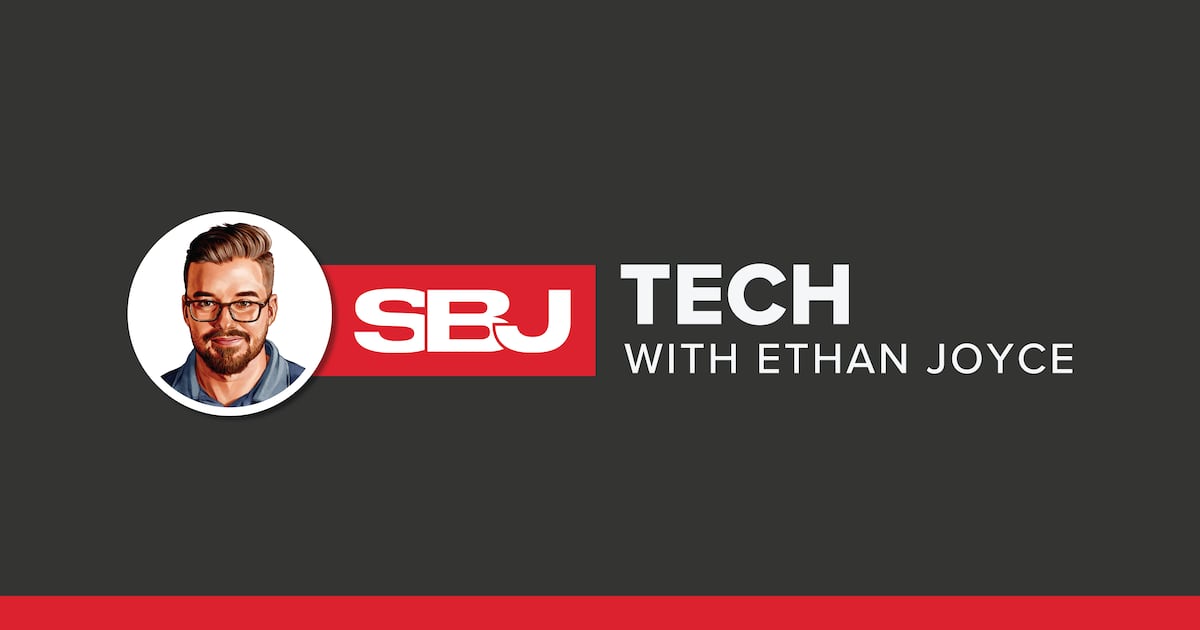Technology
Tech Trends Transforming the Way We Connect and Communicate
In the last decade, technology has dramatically reshaped how humans interact. From instant messaging to immersive virtual environments, the boundaries of connection have expanded beyond geography and time zones. The growing influence of artificial intelligence, the rise of decentralization, and the evolution of digital platforms are revolutionizing communication norms, behaviors, and expectations. As these advancements […]

In the last decade, technology has dramatically reshaped how humans interact. From instant messaging to immersive virtual environments, the boundaries of connection have expanded beyond geography and time zones. The growing influence of artificial intelligence, the rise of decentralization, and the evolution of digital platforms are revolutionizing communication norms, behaviors, and expectations. As these advancements continue to unfold, the world is witnessing a fundamental shift in how people form relationships, build communities, and share ideas.
1. The Shift to Real-Time, Cross-Platform Communication
Traditional communication methods, such as phone calls and emails, have been largely supplanted by instant messaging apps, live video tools, and collaboration platforms that support cross-device synchronization. These systems allow users to move seamlessly between mobile, desktop, and wearable devices without losing context. This shift has increased responsiveness and enabled global communication with unprecedented ease.
Furthermore, voice-to-text and speech recognition technologies now enhance accessibility, allowing individuals with disabilities or language barriers to participate more fully in digital conversations. Real-time translation tools are also narrowing linguistic gaps, enabling smoother international dialogue and remote teamwork.
2. The Role of Artificial Intelligence in Streamlining Interactions
AI plays a crucial role in enhancing communication. Natural language processing enables machines to understand, interpret, and generate human language with increasing accuracy. Chatbots and virtual assistants, for example, now handle millions of customer interactions daily, resolving queries, guiding purchases, and delivering personalized content.
More sophisticated AI moderation models can now predict conversation patterns, detect emotional cues, and even auto-generate summaries of discussions, which improves workplace efficiency and ensures key points are never lost. Sentiment analysis also allows businesses and content creators to gauge audience reactions and tailor messaging strategies accordingly.
3. The Growth of Immersive Technologies
Augmented Reality (AR) and Virtual Reality (VR) are pushing the boundaries of interaction by creating spaces where communication feels more human. These technologies are gaining traction not only in entertainment but also in education, training, therapy, and business meetings. Immersive environments enable users to engage with one another in spatially aware settings, simulating the nuances of in-person conversations.
In corporate settings, VR-powered meetings can mimic real-world interactions, reducing the fatigue often associated with traditional video calls. In educational contexts, students in different countries can now collaborate on virtual field trips or labs, gaining global perspectives in real time.
4. Decentralization and Privacy-Centric Communication
Amid growing concerns about data privacy and digital surveillance, decentralized communication tools have gained popularity. These platforms operate without centralized servers, allowing users to maintain greater control over their data and interactions. Blockchain-based messaging apps and peer-to-peer networks are offering new levels of encryption and privacy assurance.
Users are increasingly seeking systems that prioritize consent, anonymity, and data integrity. This trend reflects a broader societal demand for digital autonomy and security. As more people adopt these alternatives, traditional models of communication may face pressure to evolve and offer similar safeguards.
5. The Emergence of Asynchronous Communication Models
With the rise of global remote work and digital nomadism, asynchronous communication has become more important. Instead of requiring all parties to be present simultaneously, asynchronous tools allow users to send messages, videos, or recordings that can be accessed and responded to at different times.
This approach respects different time zones, reduces pressure for immediate responses, and fosters more thoughtful, deliberate conversations. Asynchronous communication is now embedded in project management software, team collaboration platforms, and even in emerging educational environments.
6. Intelligent Moderation and Digital Wellbeing
As more people engage online, the need to maintain healthy, respectful digital environments becomes increasingly vital. Modern communication tools are now incorporating content analysis and filtering systems to identify hate speech, spam, harassment, and other violations.
The development of AI-powered content moderation platform technologies has been central to this effort. These tools not only detect inappropriate content but also adapt based on context, language variation, and cultural nuance. In parallel, strategies rooted in trust and safety consulting have helped platforms design user experiences that prioritize psychological safety, digital well-being, and ethical transparency.
7. The Democratization of Content Creation
Advances in mobile technology and social media platforms have allowed virtually anyone to become a content creator. Video blogs, podcasts, and live streams have become integral forms of communication, enabling individuals to reach global audiences with minimal equipment.
Short-form video, in particular, has gained massive influence, fostering direct and interactive engagement. Algorithms curate personalized content streams that keep users engaged and blur the lines between personal communication and mass media. This shift has empowered grassroots movements, marginalized voices, and independent educators, reshaping the flow of information and social influence.
8. Hyper-Personalization of Communication Channels
One of the most significant trends in modern communication is hyper-personalization. Machine learning models analyze user behavior, preferences, and interaction history to deliver customized messages, recommendations, and interactions.
This trend is most visible in email marketing, app notifications, and chat systems that tailor responses to the individual. While this level of personalization can enhance relevance and engagement, it also raises questions about data ethics, manipulation, and user consent.
Organizations must balance personalization with transparency, ensuring users understand how their data is used and have the ability to opt out of intrusive practices.
9. Communication in the Age of the Metaverse
The concept of the metaverse—a persistent, shared digital space combining physical and virtual reality—is set to transform how people communicate. Early applications include virtual meeting rooms, interactive workspaces, and social hubs where users can engage through avatars.
These environments promote presence, collaboration, and creative expression in ways that traditional tools cannot. Although still in early development, the metaverse has the potential to redefine digital identity, introduce new social protocols, and reshape how individuals connect across space and culture.
10. Ethical and Regulatory Considerations
With new communication technologies come new responsibilities. Issues such as digital addiction, misinformation, and algorithmic bias require careful oversight. As governments and institutions work to regulate online spaces, communication platforms must anticipate and adapt to changing legal and ethical frameworks.
Transparency in algorithm design, robust data protection measures, and ethical AI development are now core expectations. Public trust hinges on how responsibly communication technologies are built and managed.
11. The Role of Emotional Intelligence in Digital Communication
While technology facilitates more efficient connections, emotional intelligence remains essential. Digital tone, timing, and nonverbal cues can easily be misinterpreted, leading to friction or misunderstandings. Tools that help convey emotional context—like emojis, GIFs, and visual reactions—bridge some of these gaps.
More advanced communication tools now use sentiment detection to adjust responses and flag potential conflicts. In educational and therapeutic settings, such tools are being explored to support mental health and conflict resolution.
12. The Rise of Voice-Based Interfaces
Voice-based communication interfaces are becoming increasingly common, especially with the integration of smart assistants into daily life. Users now interact with devices using spoken commands, conducting searches, setting reminders, or sending messages with minimal physical input.
This trend has implications for accessibility, reducing friction for users with disabilities or limited literacy. It also introduces new dynamics in how people multitask and interact with digital environments, reinforcing the importance of voice design in communication strategies.
13. Automation in Professional Communication
Automated workflows have entered professional communication in a big way. Automated meeting schedulers, summary generators, email response suggestions, and customer service tools are helping businesses streamline internal and external interactions.
These systems reduce human workload while ensuring consistency, accuracy, and timely follow-ups. However, over-reliance on automation can reduce authenticity, so a balance is essential. Organizations must ensure that automation serves to support—not replace—meaningful human connection.
14. Gamification and Engagement
Gamification elements are increasingly being used to enhance user engagement across communication platforms. Points, badges, leaderboards, and rewards systems can increase participation and motivation, especially in learning, training, and social media environments.
This trend reflects a deeper understanding of behavioral psychology and its application in design. Gamified communication experiences can encourage positive behavior, foster community engagement, and support long-term habit formation.
15. Looking Ahead: The Future of Digital Connection
The next frontier in communication will likely involve a fusion of biological and digital systems. Brain-computer interfaces (BCIs), biometric communication triggers, and even emotion-driven user interfaces are being researched and tested. These developments aim to create faster, more intuitive forms of connection that bypass traditional language altogether.
While promising, such innovations raise profound questions about identity, consent, and the limits of human-machine integration. As society advances toward these possibilities, inclusive dialogue and ethical foresight will be critical in shaping a future where technology enhances—rather than erodes—human relationships.
Conclusion
Technology continues to redefine how people connect, collaborate, and communicate. From AI-enhanced interactions and immersive environments to decentralized platforms and emotional intelligence tools, the pace of change is reshaping every aspect of human interaction. While these innovations present powerful opportunities, they also demand thoughtful consideration around privacy, trust, and inclusivity.
Navigating this new landscape will require a commitment to ethical design, adaptive strategies, and continuous learning. By understanding the trends shaping digital communication today, individuals and organizations can build more meaningful, secure, and human-centered ways to connect in the future.
Related
Technology
Inside one insurance company’s unorthodox approach to sports sponsorships
One of the top salespeople at Gallagher is a former pro rugby player. Nathan Hines, who played internationally for Scotland in the early aughts, joined Gallagher as business development director for its rugby clients in 2020, translating his leadership skills from pitch to pitchdeck, according to Gallagher CMO Chris Mead. The insurance brand is betting […]

One of the top salespeople at Gallagher is a former pro rugby player.
Nathan Hines, who played internationally for Scotland in the early aughts, joined Gallagher as business development director for its rugby clients in 2020, translating his leadership skills from pitch to pitchdeck, according to Gallagher CMO Chris Mead. The insurance brand is betting Hines isn’t the only athlete who can thrive in the corporate world—with a little bit of help, of course.
“You can’t just sell to a client tomorrow,” Mead told Marketing Brew. “It’s no different than you can’t hit a 98-mile-an-hour fastball or shoot a 3-point shot in one day. They’ve got that training. They just need some professional structure.”
The insurance broker, which represents a range of clients, including many sports teams, venues, and athletes, has taken a somewhat unorthodox approach to the sports sponsorship world since it began pushing into marketing around eight years ago.
Gallagher sponsors several of its sports clients that it buys insurance for, ranging from regional to international deals, and unlike a more typical buy that could focus on naming rights or jersey patches, the brand is focused on building out experiences for potential customers. Recently, it’s also expanded into serving athletes, like through an internship program for active players who might end up following in Hines’s footsteps.
Go your own way
For many brands that ink sports deals, boosting brand awareness by tapping into large, engaged audiences is key. But Mead says Gallagher didn’t get into the sports sponsorship game for name recognition. “It was much more community-based,” he said.
One of the company’s earliest partnerships was with Wrigley Field, home of the Chicago Cubs. Outside the stadium sits Gallagher Way; the space is open to ticket holders on game days, and also hosts broader community events like concerts, movie nights, and fitness classes. Similarly, Gallagher Square at Petco Park in San Diego offers a playground, dog park, and pickleball courts even when the Padres aren’t playing. With the Houston Astros, Gallagher serves as the presenting partner of the team’s Astros Foundation Volunteer Corps.
“It’s about the community and…these experiences that people can go to,” Mead said. “Where are the fans when they’re not staring at that one sign that someone has in right field? They’re interfacing within community events that we like to have our name attached to.”
Get marketing news you’ll actually want to read
Marketing Brew informs marketing pros of the latest on brand strategy, social media, and ad tech via our weekday newsletter, virtual events, marketing conferences, and digital guides.
The company’s sports partnerships extend beyond baseball, spanning football, soccer, basketball, golf, hockey, rugby, IndyCar, and the Special Olympics. Properties like World Rugby and the Special Olympics help give Gallagher global reach across men’s and women’s sports, while team partnerships add a local component, Mead said. In addition to evaluating those opportunities based on the potential for community activation, he said his team also seeks to sponsor properties for which Gallagher already serves as the risk manager.
Suit up
One of Gallagher’s earliest sports partnerships was with Premiership Rugby, the English pro rugby league for which Gallagher is the presenting partner. It was through conversations with those players that the idea for the Gallagher Partnership Internship Program was born, Mead said.
“It started with injured rugby players,” he said. “They blow out their shoulder, and sometimes they don’t have a plan. Sometimes they have a really great plan, and things just happen sooner than they thought, or they’re approaching retirement, and they’ve got all the skills we all want—leadership skills, teamwork skills.”
Since Gallagher already had a large internship program, it was just a matter of fitting athletes into that framework, Mead said. Last year, the company introduced a pilot program of the athlete internship with a handful of players from the Atlanta Falcons in the NFL, and this year extended it to include several players from the Chicago Stars in the NWSL. Mead said the plan is to eventually expand the program to the Special Olympics, too.
While the Gallagher team works to build out the internship program to include more athletes, it’s also focused on continuing to grow the company’s presence across the sports ecosystem, particularly right where it started: in rugby. Earlier this month, Gallagher announced a partnership with New Zealand Rugby, and given that the Women’s Rugby World Cup takes place this summer, women’s rugby is of particular interest as another potential growth area, Mead said.
“We’re on a pretty good clip, but I think I can see it continuing to grow, signing new teams and new leagues to partnerships,” he said.
Technology
Gaming technology revolutionizes pediatric care at Children’s Hospital Colorado
AURORA, Colo. — The Children’s Hospital Colorado is not just a place for medical treatment; it has become a hub of innovation, particularly through its Gaming Technology Department. Established with the mission of making hospital visits less daunting for children, the program has grown to harness the power of virtual reality (VR) and other gaming […]

AURORA, Colo. — The Children’s Hospital Colorado is not just a place for medical treatment; it has become a hub of innovation, particularly through its Gaming Technology Department. Established with the mission of making hospital visits less daunting for children, the program has grown to harness the power of virtual reality (VR) and other gaming technologies to enhance the healthcare experience.
In the vibrant, fun-filled Gaming Tech Department, Abe Homer, the gaming technology supervisor, remembers the early stages of the department. “I started here about six and a half years ago, and I was one of five people total in the whole world doing this kind of work,” he said. Today, gaming technology in the hospital setting is catching on. “It’s growing exponentially across the world, and I can only see it growing further and further,” Homer said.
A cornerstone of their approach is VR technology. In its usage, children like Jackson, who requires monthly IV transfusions, can immerse themselves in engaging virtual experiences that help distract them from pain. “When you do VR, your brain is actually incapable of feeling the same amount of pain signals in VR than it is outside of VR,” Homer said. This phenomenon allows the team to utilize VR as a non-pharmacological alternative that can sometimes rival traditional opioids without the associated side effects.

Denv er7
Children’s Hospital Colorado stands out as one of only two hospitals creating its own custom VR games to address specific medical needs, including physical therapy and mindfulness.
The Gaming Tech Department doesn’t just focus on developing therapies; it also serves as an engaging space for young patients. “When kids come in, they are almost immediately drawn to printers. They look cool,” said Austin Harvey, a gaming specialist in the department. “They do love just watching how it’s built.” The space features 3D printers, video game consoles, and even a music studio. This environment is crafted to inspire creativity and curiosity among children who might not have access to such things at home.
“This place is where kids can kind of feel like they’re not in the hospital anymore,” Homer said. Kids can enjoy games, crafts, and other activities that allow them to express themselves and take a break from their medical treatments. “We wanted to create a space where kids could come in as a patient and leave as a designer, an engineer, an artist,” he added.

Denver7
The department’s commitment extends beyond mere play. It also aims to build skills and knowledge. “We can teach kiddos basic engineering skills,” said Kevin MacFarlane, a gaming and technology specialist. MacFarlane says that this approach not only helps therapy but could also inspire future careers in technology and engineering.
As the department continues to evolve, Homer says it’s important to continue to evolve the work being done at Children’s Hospital Colorado. “We can kind of bridge the gap, the philosophical gap between, yes, it’s a game, but it’s a therapeutic application,” he said.
At Children’s Hospital Colorado, the Gaming Technology Department is not just changing how children engage with their medical care; it is redefining the pediatric healthcare experience altogether.

Denver7
Denver7 | Your Voice: Get in touch with Colin Riley
Denver7’s Colin Riley is a multimedia journalist who tells stories impacting all of Colorado’s communities, but specializes in reporting on transportation and our state’s senior population. If you’d like to get in touch with Colin, fill out the form below to send him an email.
Technology
North Texas’ Stack Sports Merges With Youth Sports League Management Software Provider PlayMetrics » Dallas Innovates
Stack Sports CEO Jeff Young (left) and Michael Doernberg, CEO of PlayMetrics [Photos: LinkedIn/PlayMetrics] Plano-based global sports tech provider Stack Sports and North Carolina-based PlayMetrics, a provider of operations management software for youth sports organizations, have merged, creating what the companies call “a best-in-class platform in the sports management technology ecosystem.” The merger unites two […]


Stack Sports CEO Jeff Young (left) and Michael Doernberg, CEO of PlayMetrics [Photos: LinkedIn/PlayMetrics]
Plano-based global sports tech provider Stack Sports and North Carolina-based PlayMetrics, a provider of operations management software for youth sports organizations, have merged, creating what the companies call “a best-in-class platform in the sports management technology ecosystem.”
The merger unites two highly complementary brands, augmenting PlayMetrics’ modern technology platform with the scale, reach, and capabilities of Stack Sports “to better serve the evolving needs of sports organizations worldwide,” the companies said. Financial terms of the merger were not disclosed.
San Francisco private equity firm Genstar Capital supported the merger and will be the majority owner of the combined company. As part of the deal, Genstar acquired PlayMetrics from Frisco-based Blue Star Innovation Partners, which had been the company’s lead investor since 2023.
Playmetrics CEO Michael Doernberg will lead the combined organization as CEO, and Stack Sports CEO Jeff Young will transition to a strategic role as advisor to the board of directors.
“This merger marks an exciting new chapter for the sports technology industry,” Young said in a statement. “We have long admired the PlayMetrics brand, and by combining our strengths, we will accelerate the speed at which new products are released, customer service is delivered, and industry relationships are forged.”
Software to manage sports
PlayMetrics said it helps customers streamline and modernize every facet of their operations, serving over 2,700 youth sports organizations across a variety of sports.
“Sports organizations are increasingly seeking a single, cohesive platform to manage their daily operations and complex business needs,” Doernberg said. “PlayMetrics has been transformational in delivering a one-stop solution for members, coaches, directors, and administrators. By joining forces with Stack Sports, we further enhance our ability to serve our customers with innovative, reliable, and intuitive software.”
Following a successful expansion beyond its flagship club operating system into governing bodies, leagues, and tournaments—including the acquisition of Crossbar in 2023—PlayMetrics has experienced what it said are unprecedented levels of growth and customer retention over the last few years.
“We’re incredibly proud of what the PlayMetrics team has accomplished under Mike’s visionary leadership,” Dan Wechsler, CEO of Dallas-based Blue Star Innovation Partners, said in a statement. “Together, we transformed PlayMetrics from a promising software platform into a market leader in sports management technology, delivering significant value for our investors and customers. Mike and his team’s dedication to innovation and customer success were key drivers, and we wish them all the best as they embark on their next chapter.”
Stack Sports is a global technology leader in SaaS platform offerings for the sports industry. Founded in 2016, it serves over 50 million users in 35 countries through its SaaS platform offerings serving customers like the U.S. Soccer Federation, Little League Baseball, and USA Lacrosse.
Don’t miss what’s next. Subscribe to Dallas Innovates.
Track Dallas-Fort Worth’s business and innovation landscape with our curated news in your inbox Tuesday-Thursday.
Technology
Best Fitness Tracker 2025: Top Picks for Every Budget & Lifestyle
Looking for the best fitness tracker in 2025? With so many new fitness trackers hitting the market, finding the right one can feel overwhelming. The good news is, today’s fitness trackers go way beyond just counting steps. They monitor your heart rate, track your sleep, log your workouts, and even help keep you motivated with […]
Looking for the best fitness tracker in 2025? With so many new fitness trackers hitting the market, finding the right one can feel overwhelming. The good news is, today’s fitness trackers go way beyond just counting steps. They monitor your heart rate, track your sleep, log your workouts, and even help keep you motivated with goal reminders.

Whether you’re aiming to get healthier, improve your workouts, or simply want to keep a closer eye on your daily activity, the best fitness tracker can make a real difference in your routine.
Plus, a fitness tracker also makes a great present for Father’s Day, birthdays, or even an early Christmas surprise—perfect for anyone looking to kickstart a healthier lifestyle. In this guide, we’ll break down the top fitness trackers for every budget and need, so you can find the perfect match for yourself or someone you care about.
Quick Overview for the Best Fitness Tracker (2025)
Fitbit Charge 6
Editor’s Choice

Display: 1.04-inch AMOLED | Battery Life: Up to 7 days | Weight: 30g | Water Resistance: 5ATM | Heart Rate Sensor: ECG, EDA | GPS: Built-in (can use phone) | Compatibility: iOS, Android | Price: $159.99 MSRP
When it comes to finding the best fitness tracker, the Fitbit Charge 6 is often at the top of the conversation. Especially for those who want something light, stylish, and packed with features. This band-style fitness tracker is easy to wear 24/7. It offers a sleek design with a crisp, colorful display that’s easy to read even outdoors. What sets it apart is the comprehensive health monitoring. You get reliable step and activity tracking, ECG heart health readings, and even an EDA sensor for stress management—features that make it feel almost like a shrunken-down smartwatch.
One of the highlights of the Fitbit Charge 6 is its battery life. It lasts up to seven days on a single charge, making it a strong contender for anyone tired of daily recharging. It excels as a fitness tracker for sleep tracking, offering reliable data that helps you understand your sleep quality and patterns without confusing rest for actual sleep. While the built-in GPS is great for runs and walks, it’s worth noting that accuracy can sometimes dip if you wear the band too tightly. It’s a small tradeoff for a tracker this compact.
Whether you’re aiming to build healthier habits, monitor your heart health, or want an all-around best fitness tracker for everyday use, the Fitbit Charge 6 is a fantastic pick for most people.
 Ready to see why the Fitbit Charge 6 is consistently ranked as one of the best fitness trackers? Check the latest deals and offers to get started.
Ready to see why the Fitbit Charge 6 is consistently ranked as one of the best fitness trackers? Check the latest deals and offers to get started.
Amazfit Band 7
Best Budget

Display: 1.47-inch AMOLED | Battery Life: Up to 18 days | Weight: 28g | Water Resistance: 5ATM | Heart Rate Sensor: Yes | GPS: Connected (uses phone) | Compatibility: iOS, Android | Price: $49.99 MSRP
If you’re searching for the best fitness tracker on a budget, the Amazfit Band 7 deserves a serious look. It’s an affordable fitness tracker that covers all the essentials. This includes steps, heart rate, SpO2, sleep, and stress tracking. The larger 1.47-inch AMOLED display is noticeably bigger and brighter than most trackers at this price. This makes it easy to view your stats, notifications, and workout progress at a glance. With connected GPS (which uses your phone for location tracking), it’s a great fitness tracker for beginners or casual users who want core features without overpaying.
One of the biggest selling points of the Amazfit Band 7 is its impressive battery life, lasting up to 18 days on a single charge. That means less time charging and more time tracking your activity and sleep. While it may not have all the advanced sensors of pricier wearables, the Band 7 delivers a solid, reliable experience that’s perfect for anyone looking to start their fitness journey or upgrade to a no-fuss tracker.
 Want an affordable, reliable way to stay on top of your health? See the latest Amazfit Band 7 deals now.
Want an affordable, reliable way to stay on top of your health? See the latest Amazfit Band 7 deals now.
Apple Watch Series 10
Best for iPhone users

Display: 1.65″/1.81″ OLED | Battery Life: Up to 36 hours | Weight: Varies by case | Water Resistance: WR50 | Heart Rate Sensor: Yes (ECG, AFib, SpO2*) | GPS: Built-in | Compatibility: iOS only | Price: $399+ MSRP
The Apple Watch Series 10 isn’t just a smartwatch. It’s also one of the best fitness tracker options for iPhone users. With a gorgeous OLED display and a slimmer, more comfortable design than previous generations, the Series 10 brings new health and fitness features like a depth gauge for swimmers, advanced sleep apnea tracking, and a full suite of sensors for heart health, sleep, and activity. It supports a huge range of workouts and health metrics, making it the go-to fitness tracker for anyone who wants both cutting-edge features and daily convenience.
While battery life tops out at about 36 hours (longer in low power mode), Apple more than makes up for it with seamless iPhone integration, advanced lifestyle apps, and the best third-party app selection in the category. Whether you’re looking for a fitness tracker for running, swimming, sleep, or everyday wellness, the Apple Watch Series 10 can do it all—and it looks good doing it.
 Ready to experience the best fitness tracker for iPhone? Check out the latest deals on the Apple Watch Series 10.
Ready to experience the best fitness tracker for iPhone? Check out the latest deals on the Apple Watch Series 10.
Garmin Fenix 7S Pro Solar
Best for fitness enthusiasts

Display: 1.2″ MIP (Memory-in-Pixel), Solar | Battery Life: Up to 11 days (all-systems GPS), even longer with solar | Weight: 58g | Water Resistance: 10ATM | Heart Rate Sensor: Yes | GPS: Multi-band, built-in | Compatibility: iOS, Android | Price: $899.99 MSRP
For serious athletes and outdoor adventurers, the Garmin Fenix 7S Pro Solar is arguably the best fitness tracker for multisport training, ultra-endurance, and rugged conditions. With multi-band GPS, an upgraded heart rate sensor, and a built-in LED flashlight, the Fenix 7S Pro Solar is built for real-world adventures, from trail running and hiking to triathlons. Its memory-in-pixel display isn’t as flashy as an OLED, but it’s easy to read in sunlight and helps extend battery life to a staggering 11 days or more, especially with solar charging.
Garmin’s ecosystem is famous for deep training metrics, robust navigation, and excellent battery performance, making this the best fitness tracker for athletes who need reliability above all. If you need a durable fitness tracker with advanced features and epic battery life for your next expedition, the Fenix 7S Pro Solar is hard to beat.
 Take your training to the next level—see current offers on the Garmin Fenix 7S Pro Solar.
Take your training to the next level—see current offers on the Garmin Fenix 7S Pro Solar.
Withings ScanWatch Light
Best hybrid tracker

Display: Analog with 0.63″ grayscale OLED | Battery Life: Up to 30 days | Weight: 27g | Water Resistance: 5ATM | Heart Rate Sensor: Yes | GPS: Connected (uses phone) | Compatibility: iOS, Android | Price: $249.95 MSRP
The Withings ScanWatch Light is a unique entry in the best fitness tracker category, blending a stylish analog look with modern health tracking. With real ticking hands and a minimalist design, this hybrid tracker monitors key wellness metrics like heart rate, sleep, steps, and even menstrual cycles—all viewable via a subtle OLED display and a robust companion app. Its slim, lightweight build makes it ideal for anyone wanting a discreet fitness tracker for daily wear or sleep tracking.
What truly sets the ScanWatch Light apart is its outstanding battery life—lasting up to a month between charges. While it skips onboard GPS and some advanced features found in pricier trackers, it covers all the essentials for most users and does so with style. For those who want the best fitness tracker with a classic watch aesthetic, the ScanWatch Light is a standout pick.
 Looking for style and substance? Check the latest prices on the Withings ScanWatch Light.
Looking for style and substance? Check the latest prices on the Withings ScanWatch Light.
Note: this article may contain affiliate links that help support our authors and keep the Phandroid servers running.
Technology
Finding fans a path around Nissan Stadium construction
Managing fan flow and dealing with the occasional street traffic reroute comes with the territory of venue management. But running a 70,000-seat stadium while a 60,000-seater rises up right beside it intensifies both of these significantly. That’s the situation the Titans are handling around Nissan Stadium and its next iteration, a $2.2 billion project set […]
Technology
Key Trends, Growth Drivers, Size, and Competitive Landscape Insights
The Business Research Company The Business Research Company’s Phygital Sports Market Outlook 2025–2034: Key Trends, Growth Drivers, Size, and Competitive Landscape Insights It will grow to $5.62 billion in 2029 at a compound annual growth rate (CAGR) of 27.4%. ” — The Business Research Company LONDON, GREATER LONDON, UNITED KINGDOM, June 11, 2025 /EINPresswire.com/ — […]


The Business Research Company
The Business Research Company’s Phygital Sports Market Outlook 2025–2034: Key Trends, Growth Drivers, Size, and Competitive Landscape Insights
— The Business Research Company
LONDON, GREATER LONDON, UNITED KINGDOM, June 11, 2025 /EINPresswire.com/ — The Business Research Company’s Latest Report Explores Market Driver, Trends, Regional Insights – Market Sizing & Forecasts Through 2024.
How Has The Phygital Sports Market Grown And What Contributes To This Growth?
The phygital sports market size has grown exponentially in recent years. It will grow from $1.67 billion in 2024 to $2.14 billion in 2025 at a compound annual growth rate CAGR of 27.6%. The growth in the historic period can be attributed to the growing adoption of augmented reality or virtual reality for immersive fan experiences, increasing demand for interactive and hybrid sports engagement, rising use of AI-driven performance analytics and coaching, growing popularity of connected fitness and smart wearables, and increasing investments in blockchain and NFTs for sports assets.
What Does The Future Hold For The Phygital Sports Market?
The phygital sports market size is expected to see exponential growth in the next few years. It will grow to $5.62 billion in 2029 at a compound annual growth rate CAGR of 27.4%. The growth in the forecast period can be attributed to rising funding and innovation in sports technology startups, growing consumer preference for personalized sports experiences, increasing adoption of gamification in sports and fitness, rising use of biometric data for athlete performance optimization, and increasing development of smart stadiums with digital enhancements. Major trends in the forecast period include immersive fan engagement, smart stadiums, wearable tech and biometric analytics, AI-powered training and coaching, esports, and traditional sports integration.
Get Your Free Sample Market Report:
https://www.thebusinessresearchcompany.com/sample.aspx?id=23793&type=smp
What Are The Key Drivers For The Growth In The Phygital Sports Market?
The increasing popularity of e-sports is expected to propel the growth of the phygital sports market going forward. E-sports refers to competitive video gaming where players and teams compete in organized digital tournaments. E-sports is rising due to rapid technological advancements and the global surge in digital connectivity that has cultivated a passionate, competitive gaming community. Phygital sports enhances e-sports by integrating real-world athletic elements with digital gaming for a more immersive experience. For instance, in December 2023, according to Fusion CPA, a US-based consulting company, 530 million viewers engaged with eSports through platforms such as Twitch, with this number projected to rise to 577 million by 2024. Therefore, the increasing popularity of e-sports is driving the growth of the phygital sports market.
Order Your Report Now For A Swift Delivery:
https://www.thebusinessresearchcompany.com/report/phygital-sports-global-market-report
Who Are The Industry Leaders In The Phygital Sports Market?
Major companies operating in the phygital sports market are Samsung Group, Meta Platforms Inc., Sony Corporation, EON Reality Inc., PICO Immersive Pte.ltd., Vection Technologies Ltd, ArborXR, Sense Arena, Rezzil Co, Xtadium, Simbott, VR Sport Tv, Visualise Creative Ltd, HQSoftware, Nsocial Enriched Experimental Agency, BrandXR, SPORTZCHAIN, ProYuga, Phygital Sports USA Inc., VR Esports.
What Are The Emerging Trends In The Phygital Sports Market?
Major companies operating in the phygital sports market are focusing on advancements in fan engagement platforms such as phygital sports non-fungible tokens, to enhance fan interaction, create digital collectibles, and drive new revenue streams. A phygital sports non-fungible token NFT refers to a blockchain-based digital asset linked to a physical sports collectible, enhancing fan engagement and ownership. For instance, in May 2022, Sportzchain, an India-based sports fan engagement platform, launched India’s first phygital sports Non-Fungible Token NFT, a framed matchday memorabilia commemorating a significant sporting achievement. This innovative NFT blended physical keepsakes with blockchain-backed digital ownership, marking a new era in fan interaction.
How Is The Phygital Sports Market Segmented?
The phygital sports market covered in this report is segmented –
1 By Sport Type: Football, Basketball, Hockey, Dancing, Racing, Cycling, Shooter
2 By Technology: Virtual Reality, Mixed Reality, Augmented Reality, Internet Of Things, Artificial Intelligence
3 By End-User: Individual Consumers, Sports Teams And Clubs, Enterprises And Event Organizers
Subsegments:
1 By Football: Fantasy Football Platforms, Augmented Reality AR Training Tools, Gamified Match Simulations
2 By Basketball: Virtual Coaching Systems, Motion-Tracking Training Apps, eSports Basketball Tournaments
3 By Hockey: AR/VR Training Equipment, Virtual Team Management Platforms, Phygital Hockey Simulators
4 By Dancing: Dance Fitness Gamification Apps, VR Dance Classes, Interactive Dance Competitions
5 By Racing: eRacing Tournaments, AR Racing Simulators, Phygital Motorsport Experiences
6 By Cycling: Virtual Cycling Races, Smart Training Apps, AR Cycling Tours
7 By Shooter: AR Shooter Games, Virtual Target Practice Tools, Shooter eSports Platforms
What Are The Regional Insights Into The Phygital Sports Market?
North America was the largest region in the phygital sports market in 2024. The regions covered in the phygital sports market report are Asia-Pacific, Western Europe, Eastern Europe, North America, South America, Middle East, Africa.
Browse Through More Similar Reports By The Business Research Company:
Smarts Sports Equipment Global Market Report 2025
https://www.thebusinessresearchcompany.com/report/smarts-sports-equipment-global-market-report
Sports Betting Global Market Report 2025
https://www.thebusinessresearchcompany.com/report/sports-betting-global-market-report
Sports Nutrition Global Market Report 2025
https://www.thebusinessresearchcompany.com/report/sports-nutrition-global-market-report
About The Business Research Company
Learn More About The Business Research Company. With over 15000+ reports from 27 industries covering 60+ geographies, The Business Research Company has built a reputation for offering comprehensive, data-rich research and insights. Armed with 1,500,000 datasets, the optimistic contribution of in-depth secondary research, and unique insights from industry leaders, you can get the information you need to stay ahead in the game.
Contact us at:
The Business Research Company: https://www.thebusinessresearchcompany.com/
Americas +1 3156230293
Asia +44 2071930708
Europe +44 2071930708
Email us at info@tbrc.info
Follow us on:
LinkedIn: https://in.linkedin.com/company/the-business-research-company
YouTube: https://www.youtube.com/channel/UC24_fI0rV8cR5DxlCpgmyFQ
Global Market Model: https://www.thebusinessresearchcompany.com/global-market-model
Oliver Guirdham
The Business Research Company
+44 20 7193 0708
info@tbrc.info
Visit us on social media:
LinkedIn
Facebook
X
Legal Disclaimer:
EIN Presswire provides this news content “as is” without warranty of any kind. We do not accept any responsibility or liability
for the accuracy, content, images, videos, licenses, completeness, legality, or reliability of the information contained in this
article. If you have any complaints or copyright issues related to this article, kindly contact the author above.
![]()
-

 NIL2 weeks ago
NIL2 weeks ago2025 NCAA Softball Tournament Bracket: Women’s College World Series bracket, schedule set
-

 Health6 days ago
Health6 days agoOregon track star wages legal battle against trans athlete policy after medal ceremony protest
-

 Professional Sports7 days ago
Professional Sports7 days ago'I asked Anderson privately'… UFC legend retells secret sparring session between Jon Jones …
-

 College Sports2 weeks ago
College Sports2 weeks agoIU basketball recruiting
-

 Professional Sports7 days ago
Professional Sports7 days agoUFC 316 star storms out of Media Day when asked about bitter feud with Rampage Jackson
-

 Rec Sports2 weeks ago
Rec Sports2 weeks agoScott Barker named to lead CCS basketball • SSentinel.com
-

 Youtube3 weeks ago
Youtube3 weeks agoAnt greets A-Rod & Barry Bonds before Game 3
-

 Rec Sports2 weeks ago
Rec Sports2 weeks agoJ.W. Craft: Investing in Community Through Sports
-

 College Sports2 weeks ago
College Sports2 weeks agoOlympic gymnastics champion Mary Lou Retton facing DUI charge
-

 Rec Sports2 weeks ago
Rec Sports2 weeks agoA local gym completes fitness challenge to honor fallen soldiers | News









![Apple Watch Series 10 [GPS 46mm case] Smartwatch with Jet Black Aluminium...](https://m.media-amazon.com/images/I/31Cud2WnszL.jpg)



































